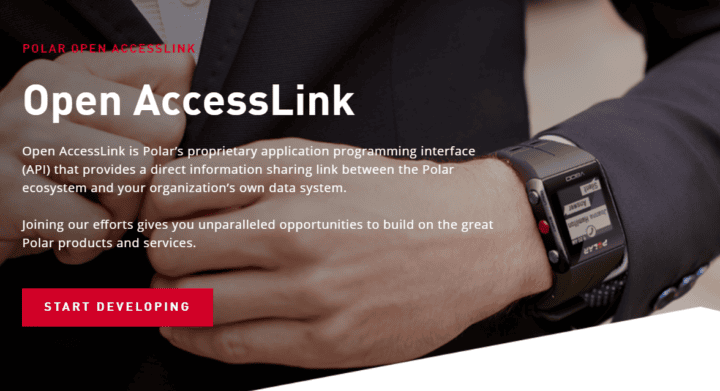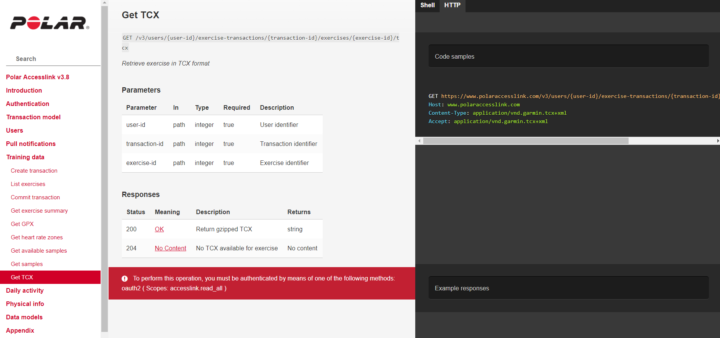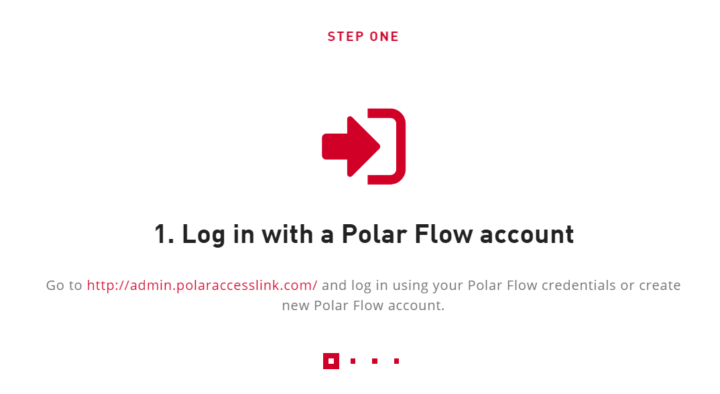Heads up – Massive Sports Tech Holiday Deals List is Live!!! The Garmin Fenix 8 is $250 off (even the Fenix 8 Pro is $100 off!), the Apple Watch Ultra 3 is on sale, the Garmin inReach Mini 2 is $249, the GoPro Hero 13 Black, DJI NEO, and a ton of other brands/deals, including Wahoo, Oura, Whoop, Polar, Samsung, Google, and more than 100 sports tech deals here!
I’m DC RAINMAKER…

I swim, bike and run. Then, I come here and write about my adventures. It’s as simple as that. Most of the time. If you’re new around these parts, here’s the long version of my story.

You'll support the site, and get ad-free DCR! Plus, you'll be more awesome. Click above for all the details. Oh, and you can sign-up for the newsletter here!
Here’s how to save!
Wanna save some cash and support the site? These companies help support the site! With Backcountry.com or Competitive Cyclist with either the coupon code DCRAINMAKER for first time users saving 15% on applicable products.
You can also pick-up tons of gear at REI via these links, which is a long-time supporter as well:Alternatively, for everything else on the planet, simply buy your goods from Amazon via the link below and I get a tiny bit back as an Amazon Associate. No cost to you, easy as pie!
You can use the above link for any Amazon country and it (should) automatically redirect to your local Amazon site.
While I don't partner with many companies, there's a few that I love, and support the site. Full details!

Want to compare the features of each product, down to the nitty-gritty? No problem, the product comparison data is constantly updated with new products and new features added to old products!

Wanna create comparison chart graphs just like I do for GPS, heart rate, power meters and more? No problem, here's the platform I use - you can too!

Think my written reviews are deep? You should check out my videos. I take things to a whole new level of interactive depth!

Smart Trainers Buyers Guide: Looking at a smart trainer this winter? I cover all the units to buy (and avoid) for indoor training. The good, the bad, and the ugly.
-
Check out my weekly podcast - with DesFit, which is packed with both gadget and non-gadget goodness!

Get all your awesome DC Rainmaker gear here!
FAQ’s
I have built an extensive list of my most frequently asked questions. Below are the most popular.
- Do you have a privacy policy posted?
- Why haven’t you yet released a review for XYZ product you mentioned months ago?
- Will you test our product before release?
- Are you willing to review or test beta products?
- Which trainer should I buy?
- Which GPS watch should I buy?
- I’m headed to Paris – what do you recommend for training or sightseeing?
- I’m headed to Washington DC – what do you recommend for training?
- I’m from out of the country and will be visiting the US, what’s the best triathlon shop in city XYZ?
- What kind of camera do you use?
-
5 Easy Steps To The Site
In Depth Product Reviews
You probably stumbled upon here looking for a review of a sports gadget. If you’re trying to decide which unit to buy – check out my in-depth reviews section. Some reviews are over 60 pages long when printed out, with hundreds of photos! I aim to leave no stone unturned.
Read My Sports Gadget Recommendations.
Here’s my most recent GPS watch guide here, and cycling GPS computers here. Plus there are smart trainers here, all in these guides cover almost every category of sports gadgets out there. Looking for the equipment I use day-to-day? I also just put together my complete ‘Gear I Use’ equipment list, from swim to bike to run and everything in between (plus a few extra things). And to compliment that, here’s The Girl’s (my wife’s) list. Enjoy, and thanks for stopping by!
Have some fun in the travel section.
I travel a fair bit, both for work and for fun. Here’s a bunch of random trip reports and daily trip-logs that I’ve put together and posted. I’ve sorted it all by world geography, in an attempt to make it easy to figure out where I’ve been.
My Photography Gear: The Cameras/Drones/Action Cams I Use Daily
The most common question I receive outside of the “what’s the best GPS watch for me” variant, are photography-esq based. So in efforts to combat the amount of emails I need to sort through on a daily basis, I’ve complied this “My Photography Gear” post for your curious minds (including drones & action cams!)! It’s a nice break from the day-to-day sports-tech talk, and I hope you get something out of it!
The Swim/Bike/Run Gear I Use List
Many readers stumble into my website in search of information on the latest and greatest sports tech products. But at the end of the day, you might just be wondering “What does Ray use when not testing new products?”. So here is the most up to date list of products I like and fit the bill for me and my training needs best! DC Rainmaker 2024 swim, bike, run, and general gear list. But wait, are you a female and feel like these things might not apply to you? If that’s the case (but certainly not saying my choices aren’t good for women), and you just want to see a different gear junkies “picks”, check out The Girl’s Gear Guide too.






















Hello DC,
Again (as usual) nice insight.
Link to Strava favorites not functioning?
Hans
The “Get to work” link seems to be nonfunctional as well? Thanks.
Sorry all, fixed!
TrainingPeaks has an open API?!?
not really…
They do. Now, they don’t have it both ways, but it’s pretty open for the upload direction.
It’s also why I said ‘mostly’ in that sentence.
true i can “give” them my data, but i still can’t “get” the data i own per your definition:
“As I’ve long argued, consumers should own their own data, and companies should make it easy for consumers to get access to that data via whatever apps they deem valuable to them. “
Yup, totally agree with you. It’s long on my list for things to write up about (API’s, who does it well, doesn’t do it well, etc…).
As a Garmin user and a developer, I’d love to have access to their API. I have lots of ideas of products I could build but it doesn’t make sense to pay $5K to have access to their stuff. I hope we get to a point where all these companies open up the black box.
Garmin is not even opened to users suggestions. Their development is capable, but they missing a leader who will determine the direction. They would need a visionalist like Steve Jobs was.
Their hepldesk doesn’t know how to convert activity nr to URL and how to check which software version was installed on the device at the time when an activity was recorded…
With API is the same situation, like it was with mobile phone chargers. Each manufacturer had it’s own plug-end and decades passed till they came to a common micro-USB plug…
Ironic though Apple’s “vision” in a USB plug is a proprietary one that undoubtedly generates a lot of extra income for them. I added to their bottom line for this very thing the other day.
It seems I’m able to edit the above text. And links are not one-click (they do work through right-click). Have know idea what happens with these changes (I tried to keep my hands off).
Same here.
one of the div tags is:
div id=”f3cda78f-5ec2-4f28-be0a-74ad73773270″ class=”postBody” contenteditable=”true”
So makes the web browser think its editable
OK, but this new API is for Polar Flow. Nothing for polarpersonaltrainer and nothing about how they would integrate both services, neither about what users would do after Dec 2019, the new ‘apocalypse’ for these ‘old devices’ from Polar (Websync software allows to export gpx and hrm files, but the only place you can create new training programs for these devices is the ppt platform). Even if Polar finds some way to transfer all data from ppt to Flow, this won’t solve this issue of crippling the vast majority of these device’ capabilities.
Actually PPT data is also transferred to Polar AccessLink so older devices are also supported here.
Manually, maximum 10 sessions each time. And is not possible to create training programs in Flow to use with these ‘older’ devices.
Sorry, I don’t know why I misread “Polar Flow” instead of “Polar AccessLink”.
OK, but how will this work, since it would be “read only”?
Would be interested in any insights. I recently obtained a Suunto Ambit3 Run, and all works well except the one feature I was looking forward to using the most – uploading my runs to online site. The phone app is mostly a miss, and the watch to laptop for upload via Movescount is a total miss. Is there a general consensus as to who offers best experience in getting watch data online, out of the big 3 – Garmin, Polar, or Suunto?
Thus should work well with Apple Watch app integration , particularly heart rate date sync for open water swims with the h10
I am little unsure about APIs in certain contexts. I run a couple of sites where we invest huge amounts of effort to collect data than is not otherwise “centrally” available. People then ask us if we have an API as usually I get the impression that they want access to this data for nothing. So not only could such free access not help us collect the data, it could result in people competing with you using your data! That’s then when talk of access fees and commercial arrangements starts to make more sense to me.
I think it totally depends on the context. If you’re talking about a site where the asset is the data that you’ve spent time collecting, then I don’t think API’s make sense without a financial transaction. A good example here would be for example if some other site wanted to leverage the DCR Comparison Database. That’s something that I’ve spent time building out, and thus unless they’re paying me to do so – it’s unlikely I’d open that up [Sites have asked, all wanting for free].
Whereas when it’s user-driven data, having an API to get that data out and share it is more valid. For example, let’s say someone came up with a use case for wanting to integrate with the DCR Analyzer (for file analysis). I’m not opposed to that, assuming there’s a roughly broad use case for it. And as such, it’s highly unlikely I’d charge another entity for it (despite me having to pay for developer time).
Yeah in that context it makes a bit more sense. News media is another tough one, a company invests in journalists and then an aggregation site comes along and essentially takes that investment. I still feel there are too many who don’t appreciate that content does not just appear and there are times when you need to protect your IP. It also annoys me when people write to ask what they want but neglect to say how them having access would actually benefit me.
I wonder if this move is not a little bit related also to GDPR (link to en.wikipedia.org) Perhaps not directly but surely it could make it easier for them to check some boxes. As that is part of GDPR, making people easily owners of data and easily ask for retrieval. If a lot of 3rd party build tools to easily dump all data chunks from Polar, polar will not be queried to many times by potential customers requesting their all data.
It’s a win win, as at least for now – I have not seen even ability to dump easily chunk of data from Polar Flow. I use still RCX5 which means PPT and that means that when I transfer data to flow it’s now automatically Sync to i.e, Strava and I need to do it manually. If I have week of trainings to upload I need to do it one by one from Flow.
I might use this API to automate things a bit. Before flow I used OS X automator function and some nice Dropbox App that would automatically sync to Strava and Endomondo but I used ‘3rd part GPX/HRM converter and often data was mismatching. Using Flow’s TCX usually is much better.
Any new on v650 successor
I’ve looked into this just a few days ago, and the API has already been opened to the public.
Unfortunately there’s no way to get raw data series such as BPM, to do your own computations. For example, to display a graph of my own creation, or to retrofit the data of an A360 after a ride with that of your bike computer’s to use the result in offline tools such as PyTrainer.
The BPM is included within the activity file (ironically, the screenshot) I included up above halfway through the ‘What Polar is Opening Up’ section.
Would this mean that eventually, I plug my Garmin Edge into the PC and it uploads workout data automatically to Polar flow ? Sounds Like Fun !
Until now, it’s only read-only. Means, you cannot upload anything to polar flow.
Some Apps like RunGap can do that with some (dirty?) tricks…
Hi Ray,
so that means – still no option to export sleep data?
Thank you!
I feel that the companies who are winning out in the sports realm, are the once who play well with others. Example: I love the look of the Suunto multisport watches and would really, really love to buy one, but they stopped ANT+ support and that completely ruined it for me. Not to mention the inability to change data fields on the watch while exercising. But that’s a whole different story. Garmin has learned the quickest about playing well with others. Even though I believe ANT+ is far superior to Bluetooth, never the less, Garmin incorporated Bluetooth sensor compatibility into their latest offering. This makes them much more attractive to the buyer that’s on the fence when looking into a multisport watch. I’m gonna rant about Kinetic while I’m on the subject. I love their inRide product, but they handicapped it to hell, by not adding ANT+ support. Every company out there should ask themselves how Wahoo became so big, so quickly. They play well with others, that’s how. By adding support for just about any type of protocol that’s out there, they were able to lure in all those buyers with different needs. Some ANT+, and some Bluetooth. And some like me that uses both. And that’s why I own a Wahoo Kickr. My rant is a little off the subject, but it all ties together in the end.
It seens that the Polar accesslink API delivers only new training and new activity data, no historical data. That reduces the applicability and useability.
Yep, that’s what I got from looking at the API (v3.36.0 currently) and this is a HUGE bummer. Even if you write an application that fits into this idea, the moment your user reinstalls or data gets lost in some other way, it’s locked up for good behind Polar’s walls. No bueno.
Hi Ray,
any further word on this?
I love Polar Flow – imo, it’s the easiest app to use, and because i have 24/7 HR data from my M430 tracked, I’d be loathe to move on from it. However, the M460 is pretty basic, I’d much prefer to use a Wahoo for cycling.
I think all the HRM manufactures are missing an opportunity. The ability to import training plans and training sessions into the HRM unit. I have used Polar’s Flow based training plans and they’re best feature is that the HRM reminds you of sessions, has the activity sent to the Unit and guides you through the activity setting pace, limits and time alarms. If you could get this functionality from training programs imported from 3rd party apps such as Training Peaks, Strava, Today’s plan it would certainly improve things for the end user.
Hi DC Rainmaker, as time is ticking away I also hit on the data-import-issue to Polar Flow from non-Polar platforms. I am using the Polar platform ever since the year 2000 and kept on buying Polar devices. Next to the M430 + M450 + many other Polar devices in my family I did buy a Wahoo Element Bolt (as the V650 didn’t convince me in navigation options) this year and now I have to face data-incompleteness. How to get data transferred into Polar Flow, whereas Strava could be the ‘neutral’ datacollector? Any news on the Polar-data-trail?
Try parallely running the Polar Beat app on your phone.
I use a Fenix 3 HR and see my activities in Garmin Connect. I am very happy with it. I am thinking about buying a Polar Vantage V (I am just waiting for forthcoming software results, for at the present time reviews are not so good) and I wonder if there would be a possibility of having the activities transferred automatically from Polar Flow to Garmin Connect.
Would it be possible? Would an application like Strava or Tapirii do it automatically? Is there another possibility?
Thanks!
Any idea if Polar might allow an app to be developed to trim the end of workouts we forget to stop the watch for? It’s only been requested for at least 5-6 years now…